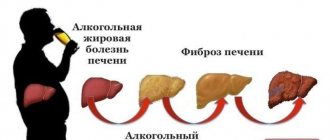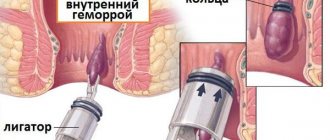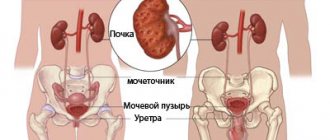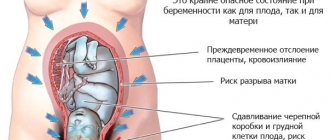The article was prepared by a specialist for informational purposes only. We urge you not to self-medicate. When the first symptoms appear, consult a doctor.
The spleen is an organ of the human body that is essential because it helps normalize human metabolism. It performs a hematopoietic function, forming lymphocytes and red blood cells, and is also a natural filter, since it perfectly cleanses the blood of harmful substances, viruses, various bacteria, and forms immunity.
It is quite rare to remember about diseases of the spleen until it reminds you of itself with pain. Ailments in the area of this organ indicate that normal functioning is disrupted. Since the spleen does not have pain receptors, its pathology can only be identified with a full examination by a specialist. Malfunctions of the spleen are always fraught with some loss of the human body’s ability to fight numerous diseases.
Causes of pain in the spleen
The cause of pain in the spleen may also be the presence of parasites. One of the most common is considered to be unilocular echinococcus. If treatment is not started on time, dangerous ruptures in the spleen are likely. It is quite difficult to detect the presence of parasites, which is why modern methods of ultrasound examination and tomography are used.
It is quite possible that tumors may be benign or malignant. Unfortunately, it is quite difficult to find out at an early stage, so if there is muted pain in the left side of the side and heaviness, you should immediately go to the doctor.
Diagnosis of spleen tumors
Currently, with the widespread introduction of non-invasive diagnostic methods, focal formations of the spleen are often detected accidentally during ultrasound or CT (NMRI) studies during a routine examination.
When a tumor-like formation is detected in the spleen, the specialists of instrumental research methods must set the following tasks for the surgeon:
- Clarification of the localization and size of the pathological focus in the spleen;
- Presumptive determination of the morphological nature of the formation (primarily, the likelihood of a malignant and parasitic nature);
- Determining the condition of adjacent organs (signs of compression, germination, primary lesion);
- Determination of the characteristics of the blood supply to the spleen (the level of division of the splenic artery into lobar branches, their number).
In recent years, spiral computed tomography (SCT) with intravenous bolus contrast enhancement using non-ionic contrast agents (Ultravist, Visipaque, Omnipaque) has become widespread. First, a non-contrast scan of the abdominal cavity is performed, and then a SCT study with BCU (intravenous administration of 100 ml of contrast agent at a rate of 3 ml/sec) with various scanning time delays (from 17 to 40-80 sec.).
The use of this technique makes it possible to clearly distinguish unchanged tissue zones that accumulate contrast agents well from areas of tissue decay and fluid accumulations. In addition, it is possible to obtain a more complete understanding of the angioarchitecture of the spleen itself and the adjacent great vessels, which largely contributes to a high differential diagnosis between cysts and tumor lesions. The diagnosis of SCT is usually confirmed morphologically in 95% of cases.
Thus, it is desirable to include ultrasound, duplex scanning, CT and MRI in a modern preoperative diagnostic program, and in this order, since each method, complementing the previous one, solves narrower, specific problems. Of course, none of them is absolute in identifying focal lesions of the spleen.
Noteworthy is the frequency of diagnostic errors when identifying spleen formations, which reaches 75-80% even when using modern research methods. Therefore, an integrated approach is needed here using all modern diagnostic methods.
Only a comprehensive examination in a specialized hospital makes it possible to determine the pathological focus, its topographic and anatomical characteristics and, ultimately, the optimal treatment tactics. Using this diagnostic scheme, in recent years we have been able not only to identify a lesion in the spleen, but also to accurately localize it in almost 94% of cases.
The final diagnosis is established only during surgery using histological examination.
Symptoms of pain in the spleen
Damage to the spleen is indicated by serious pain on the left side of the hypochondrium; subsequently, the pain can affect the area from the shoulder to the shoulder blade. Abnormal functioning is also indicated by nausea and vomiting, trembling, decreased blood pressure, lack of blood, and shortness of breath. If a person has the above symptoms, he definitely needs to lie on his back or recline on his left side.
Various infectious diseases of other organs are the result of damage to the spleen. These are serious consequences of typhoid fever, anthrax, sepsis, infectious lymphocytosis and mononucleosis, malaria, hepatitis, syphilis and other ailments. The existence of arterial blood clots can cause splenic infarction. Atherosclerosis, diffuse diseases, leukemia, lymphosarcoma, and certain infectious diseases often cause a blood clot. As a rule, signs of spleen thrombosis are detected when it is inflamed.
Spleen abscess is activated by certain consequences of infectious diseases. The causes of the abscess can be salmonellosis, post-infarction, post-traumatic infections. The first signal of a splenic abscess is fever. In addition, many patients complain of severe left-sided pain. With tuberculosis of the spleen, there is a strong increase in its volume, which is accompanied by incredibly severe pain.
With an enlargement of the spleen, a dense protrusion appears in the left side, the skin, in particular the front part of the head, turns pale. Coughing, any movement, even lying on the left side is accompanied by stabbing pain and significant pressure. There is fatigue of the body, decreased immunity and pain in the umbilical region. The human lymphatic system, in this case, is always affected by poisons and toxins. Most likely they are the result of the work of pathogenic microbes that remain in our body due to untreated infectious diseases.
These serious diseases can be combated using various methods; the main thing is to warm the areas that are affected by the infection. You can use pepper patch or warm compresses.
Causes and main diseases of the spleen
The spleen is a healthy organ
Before moving on to the symptoms that appear with a particular disease, it is necessary to find out the reasons why problems occur with this particular organ. It should be noted that due to the structure of the spleen, pain will only occur when the capsule is stretched, and therefore the number of reasons why this can happen is significantly narrowed. So, the main reasons why this or that disease may develop include:
- An open injury resulting from a knife or gunshot wound, or a fall on a sharp object
- Closed injury, which happens much more often. Typically, a person receives a closed injury during a fall, regardless of whether it was from a great height or a small one, or a blow from a blunt object, etc.
- Infectious diseases such as hepatitis, typhoid fever, etc.
- Blood diseases, which include leukemia (that is, leukemia), lymphosarcoma, etc.
- Cysts and tumors that have formed directly in the spleen or near it
Only a doctor can understand whether there is a violation of this organ or not. Often, during an external examination, the doctor notices a significant increase in it and conducts a survey of the patient, finds out whether any diseases have been suffered, whether there has been a fall, etc. The main diseases of the spleen include:
- Heart attack. This is one of the most common diseases, the symptoms of which are quite vivid.
- Abscess
- Cyst, both parasitic and not
- Tuberculosis
- Tumors, both malignant and benign
Based on the cause of the disease and the disease itself, the symptoms that appear in a person depend. If at least one of the symptoms appears, you must immediately consult a doctor for a diagnosis and treatment.
What to do if you have pain in the spleen?
Initially, spleen disease does not manifest itself as pain; pain often occurs after its significant enlargement. Therefore, as soon as the slightest discomfort appears in this area, the above signs of the disease are visible, you should immediately consult a therapist. After examining the patient, the doctor will be able to determine the condition of the organ using standard palpation during the period of inspiration. The doctor’s conclusion should also be confirmed by the results of modern tests, the necessary ultrasound and tomography studies.
It is worth treating the cause of the disease itself in order to avoid repeated failures in the functioning of the spleen. Having established a preliminary diagnosis, the therapist will refer you to the appropriate professional: an infectious disease specialist, hematologist, traumatologist, surgeon or oncologist. If treatment does not give the expected results, then the issue is resolved through surgery. Many doctors recommend eating right and leading a healthy lifestyle to prevent such serious consequences.
To quickly normalize the functioning of the lymphatic system, proper breathing is necessary. When you inhale and exhale deeply, the muscles that are responsible for the movement of the lungs stretch and put pressure on the lymph vessels of the intestine, which accelerates the movement of blood through the vessels. The functioning of the spleen will also improve through regular physical activity, special exercises and walking. In this case, rapid and deeper breathing is observed.
Author of the article:
Mochalov Pavel Alexandrovich |
Doctor of Medical Sciences therapist Education: Moscow Medical Institute named after. I. M. Sechenov, specialty - “General Medicine” in 1991, in 1993 “Occupational diseases”, in 1996 “Therapy”. Our authors
Symptoms of an enlarged spleen
Typically, the spleen increases in size in response to serious problems in the body. Accordingly, this geometric or functional increase will be accompanied by manifestations characteristic of a particular disease.
The increased destructive potential of the organ is eloquently evidenced by the indicators of increased destruction of blood cells (and accelerated formation in the bone marrow). Blood, stool, and bone marrow smear tests can identify these abnormalities.
The lack of cellular elements of the blood also has its numerous pathological consequences: bleeding and hemorrhages, weakness, chronic fatigue, pallor, long-term non-healing wounds, susceptibility to various infections, etc.
Patients may also complain about immediate discomfort caused by a significantly enlarged organ: nagging pain and bloating in the abdomen, a quickly developing feeling of heaviness in the stomach during meals, etc.
The increased size of the organ is diagnosed by palpation and instrumental methods (ultrasound, tomography).
The spleen - what function does it perform in the body and when is it necessary to remove this organ?
The bulk of the spleen is made up of reticular tissue, from the cells of which blood cells and hemocytes develop. In the spleen, old and dysfunctional red blood cells (red blood cells) break down. It is a blood depot organ - it accumulates a supply of blood, therefore, when the blood supply to the body decreases and the need for blood increases, the body uses the blood reservoir from the spleen.
The interview was conducted by the head of the Department of Surgery of the National Center of Surgery, general surgeon Gigo Pichkhaia.
Where is the spleen located in the body?
The spleen is located in the left hypochondrium. The weight of the spleen of an adult is 150-200 grams, length 12 cm, width 7-8 cm.
Why does the spleen enlarge?
An enlarged spleen is called splenomegaly. This condition is caused by both pathological and non-pathological reasons.
Several risk factors that cause splenomegaly and enlarged spleen:
- Bacterial, viral, parasitic infections;
- Malignant blood diseases;
- Cirrhosis and other liver diseases;
- Inflammatory diseases;
- Tumor damage to the spleen;
- Metabolic disorders, etc.
What are the symptoms of an enlarged spleen, splenomegaly?
It should be noted that splenomegaly rarely manifests itself symptomatically, but the most common symptoms that are characterized by:
- Feeling of pain and heaviness in the left half of the abdomen;
- Feeling full before eating;
- Hiccups;
- Fatigue;
- Weight loss for no reason;
- Frequent infectious diseases;
- Tendency to bleeding;
- Jaundice;
- Anemia, etc.
In addition, splenomegaly may be accompanied by symptoms that are caused by the underlying disease.
How does a surgeon examine the spleen, is it enlarged or not?
Splenomegaly (enlarged spleen) can be determined by examination (palpation), however, in order to determine the size and other pathological changes occurring in the spleen, an ultrasound examination of the abdominal cavity is performed. Surgeons at the National Center of Surgery also use high-tech instrumental studies, such as computed tomography of the abdominal cavity and magnetic resonance imaging. The need for these studies depends on the disease causing splenomegaly.
Sometimes additional tests are needed to determine the cause of an enlarged spleen, for example:
- Liver function tests and biopsy;
- Biopsy of bone marrow and lymph nodes;
When does the question arise about removing the spleen or splenectomy?
Removing the spleen in medical language is called splenectomy.
The question of planned splenectomy, removal of the spleen during splenomegaly (enlarged spleen) arises when the enlargement of the spleen causes a number of pathological changes in the blood, for example, hematological diseases, pathologies caused by pressure on the abdominal organs, or when splenomegaly cannot be treated.
At the National Center of Surgery, splenectomy is successfully performed using both open and laparoscopic methods.
What is laparoscopy?
Laparoscopy is a type of surgical intervention during which the surgeon does not need to make large incisions in the skin to enter the abdominal cavity and pelvis.
Practice shows that, compared with the open method, in the case of splenectomy using the laparoscopic method, blood loss is much less, the patient returns to an active lifestyle faster, the hospital stay in the postoperative period is short, and the risk of complications of the postoperative wound is lower.
Life without a spleen
Life without a spleen is possible, although the risk of infectious diseases without a spleen increases significantly. That is why patients must be vaccinated against meningococcus, pneumococcus and against hemophilis influenza both before splenectomy and after its removal.
Address of the National Center of Surgery: Tbilisi, Digomi, st. Chachava No. 5
Help desk phone number of the National Center of Surgery: 577 119 119 or 2 02 25 25
For all questions, for the purpose of consultation, you can contact the head of the Department of Surgery of the National Center of Surgery, Gigo Pichkhaiya at 596 26 92 92
We wish you good health!
spleen removal of the spleen enlargement of the spleen










